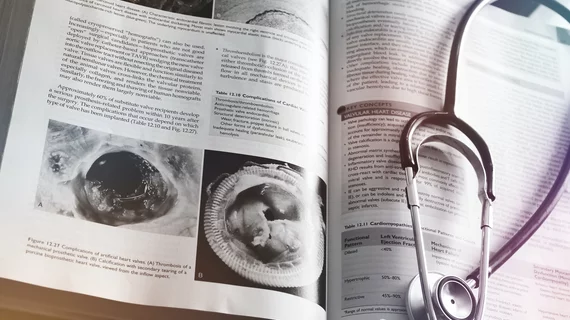Preclinical radiology education programs offer long-lasting benefits for the field
Offering preclinical radiology-based education programs could be the key to addressing some of the field’s most pressing issues regarding recruitment, diversity and understanding of radiological topics across medical disciplines.
And the benefits of such programs are long lasting, according to a new analysis published in Academic Radiology that details one institution’s efforts to improve students' perceptions and understanding of the field of radiology.
“Early exposure to radiology during medical education has been shown to help students become better clinicians and to help correct common misconceptions about radiology as a career,” corresponding author Nicholas R. Brandser, with Wake Forest University School of Medicine, and colleagues suggest. “It is critically important for medical students to gain basic skills in study selection and interpretation of findings in order to optimally care for patients.”
At Wake Forest, a dedicated year-long curriculum known as the Radiology Scholars Certificate Program (RSCP) was established to introduce preclinical students in their first and second years of medical school to a variety of radiological topics. The elective program involves monthly in-person and virtual events where students can participate in case-based review sessions, question and answer panels, ultrasound guided procedure workshops, physician shadowing, online case-based modules and more.
Pre- and post-certification surveys indicate that thus far the program has been well received and has achieved the goal of improving students’ understanding of radiology. However, until recently, whether the knowledge gained during the program would stick and persist throughout the students’ medical training was less clear.
To determine whether participating in the program has continued to benefit students, a questionnaire on selecting appropriate imaging studies and basic image interpretation was sent to all third- and fourth-year students, including those who did not participate in the certification. The questionnaire also gauged students’ opinions and attitudes related to their understanding of radiology topics.
Out of the 54 students who completed the questionnaire, 34 had previously completed the certification program. Those who did were significantly more skilled at selecting appropriate imaging studies and correctly interpreting findings. Those same students displayed higher confidence when ordering exams, greater satisfaction with their training and more favorable perceptions of the field.
Given the students’ performance two years after completing the program, the authors noted that continuing to offer the curriculum “promises to produce physicians who have improved communication with radiologists, utilize diagnostic imaging more appropriately, and who can act appropriately on many basic, emergent imaging findings in a timely manner.”
Offering elective radiology-based preclinical programs at other institutions would yield similar results, the group suggested.
Learn more here.

